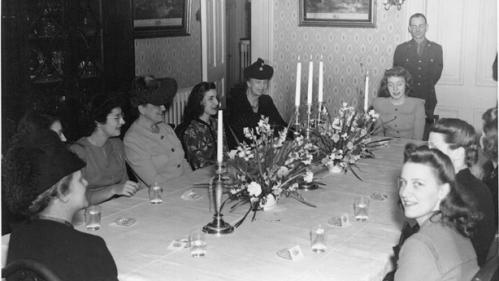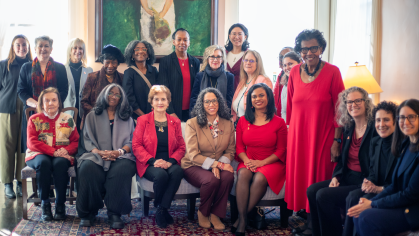A new book by Rutgers faculty and staff examines the history and diversity of Douglass Residential College in celebration of its 100th anniversary
About a decade before the peak of the Civil Rights movement, black and white students at New Jersey’s first public college for women came together to protest the fact that their African American classmates were not allowed to live in the dorms.
The students were pioneers against injustice, also working to raise awareness about the incarceration of Japanese Americans during World War II. The history of activism remains part of the fabric of what became Douglass Residential College, which is celebrating its 100th anniversary this year.
The story of the evolution of Douglass, which opened in 1918 as the New Jersey College for Women, is the subject of a new book The Douglass Century: Transformation of the Women’s College at Rutgers University published by Rutgers University Press.
Authored by Rutgers University-New Brunswick faculty and staff Mary Hawkesworth, Fernanda Perrone, and Kayo Denda, the book traces the strategic transformation of the college against the backdrop of debates about women’s education.
Here are five facts about Douglass revealed in the book that were not previously well known:
- Mabel Smith Douglass led a door-to-door, $1 subscription campaign to raise money to construct the college’s first building. The New Jersey College for Women opened with a class of 54 students and a single building.
- Julia Baxter Bates, the first African-American student at Douglass, served as the national director of research and information for the NAACP, and researched and coauthored the winning brief in the Brown v. Board of Education of Topeka, Kansas decision.
- Douglass students created the Douglass Migrant Project, which focused on the hardships of migrant farmworkers in New Jersey during the 1960s. The Project’s assessments of the needs of the migrant community in Cumberland County led to the creation of a day care center for migrant children, as well as first aid and safe-driving workshops for migrant workers.
- Several dignitaries have visited Douglass, including First Lady Eleanor Roosevelt, who lectured and appeared on the Douglass campus three times in the 1930s, and Congressional Representative Shirley Chisholm who addressed the graduating class during the 1969 Douglass Commencement.
- During the 1970s, Puerto Rican student groups like the Douglass Puerto Rican Students organized protests that led to the introduction of the department of Latino and Caribbean Studies at Rutgers University.
“Through the years, Douglass not only continued to provide rigorous public higher education for women at a low cost, but also became a leader in specific fields, including the visual and performing arts and women's studies,” said Fernanda Perrone of Rutgers University Libraries.
“It also continues to provide innovative programs for women in leadership; and science, technology, engineering, and mathematics, (STEM) fields, which are rooted in the college's early identity as a pioneer of women's education in these areas,” she said.
Douglass will continue to celebrate its centennial throughout the spring. The Global Summit on April 21st continues work in the tradition of the Douglass Migrant Project. This year’s summit examines problems and solutions to the mass migrations of populations across the globe, with a particular focus on women’s lives. The 99th Sacred Path, one of Douglass’ longest continuing events, celebrates the moving up of the classes on April 29th.
from Rutgers Today



